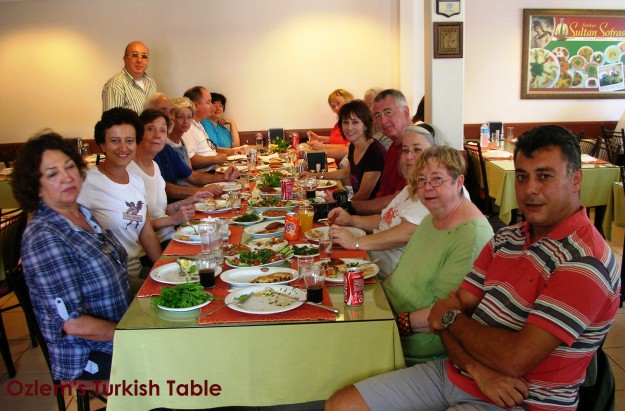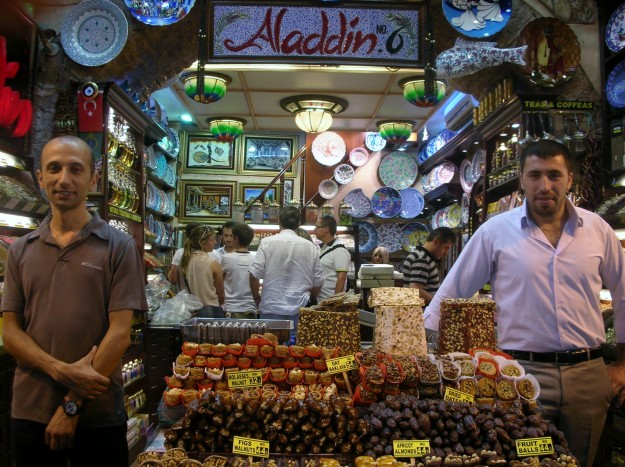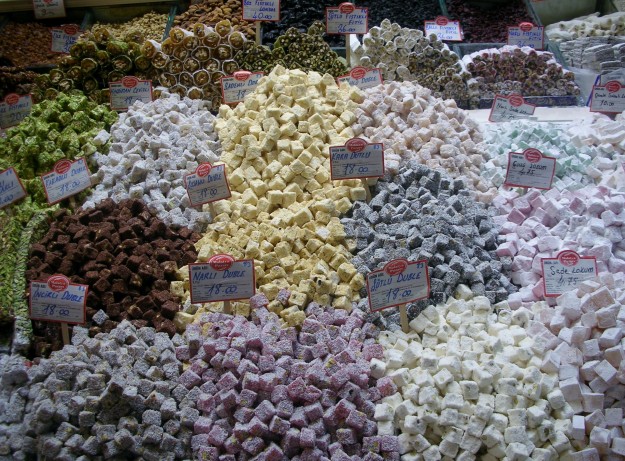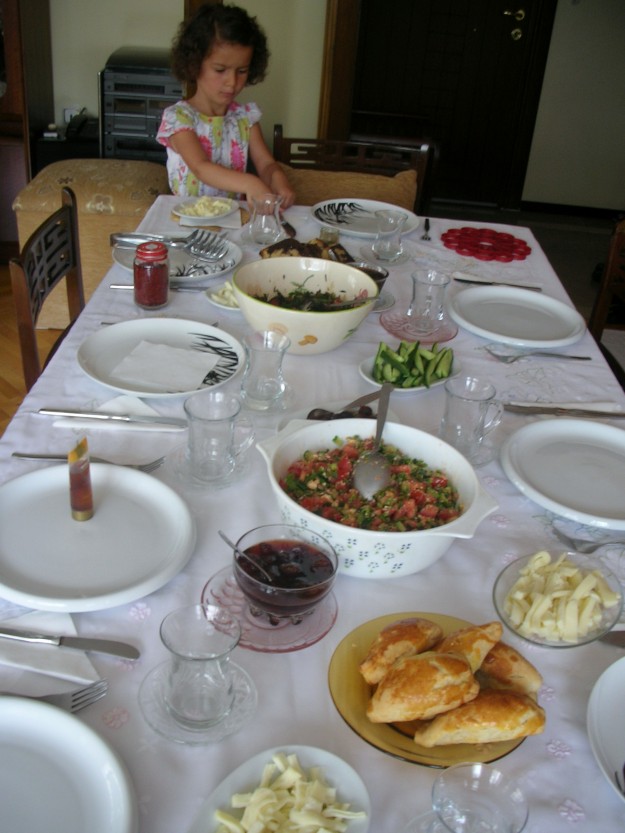Have you ever tried the deliciously frothy Turkish coffee? It is one of the most popular traditional drinks at home in Turkey and I love the whole ritual, the experience of it. In Turkish, we have a saying “Bir fincan kahvenin kirk yil hatiri vardir” which means “The memory of a good cup of Turkish coffee lasts 40 years”. Turkish coffee is a drink of friendship; you are offered this traditional, aromatic drink wherever you go in Turkey; when visiting friends and family, in the shops, while waiting in the bank, in hairdressers.. We take time to pause and enjoy this special drink with a friend or family or sometimes simply reflect with every precious sip. A glass of water and Turkish Delights by the side complete the Turkish coffee ritual.
Turkish coffee is made from 100 % Arabica beans that have to be toasted to the point and ground to a very fine powder. When properly made, a delicious foam forms at the top, which is essential to any Turkish coffee. My mother loves her daily Turkish coffee but needs to limit with one a day. If she is ordering in a Café, she charmingly asks the waiter for a “guzel kopuklu kahve lutfen” which means “Turkish coffee with a nice foam at the top please”; that is her treat for the day and she thoroughly enjoys that one cup with a smile on her face.
Although Turkish coffee was first cultivated at the southern edge of the Arab peninsula, it was via the Ottoman Empire that the fame of coffee spread to Europe. Within just a few years of its introduction to Europe, hundreds of coffee houses sprung up in Istanbul alone, and coffee drinking became such an important part of daily and ceremonial life that the Sultan’s coffee set was carried during royal processions; every wealthy household had a servant whose sole task was to prepare coffee and under the laws the failure of a husband to provide his wife with coffee was grounds for divorce (so they say)!
When I was a little child, my mother used to make us very milky Turkish coffee – so we could join in the ritual with them :). And just for the fun of it, once in a while we used to turn our coffee cup upside down to its saucer after finishing, in search of our fortune. My mother would always see the happiest things inside the cup; if there is “a bird” in the cup, that is good news, if there are “narrow lines”, there is a travel on the horizon; if there are “horses” in the cup, that is good fortune. Nothing ever bad appeared in our cups and we loved listening to mum and this innocent fun with giggles.
When we stopped for a break while visiting Ephesus last April, I reminisced this childhood memory and I ordered my Turkish coffee. After drinking, I turned my coffee cup upside down to its saucer, eager to see what waits for me. And to my surprise, I did spot a horse in the cup (can you see it?), with a smile on my face. I am now looking forward to this fortune!:)
Though not the traditional way, a little hot milk may also be added to Turkish coffee in some parts of Turkey; like Turkey’s For Life experienced in Van; you may enjoy this version if you like it less strong. Please also check out A Seasonal Cook in Turkey for delicious Turkish coffee experiences in Istanbul.
How about Menengic Coffee? This aromatic Southern Turkish Specialty features Menengic, known commonly as terebinth and turpentine tree, is a species of Pistacia, and wildly grown in Southern Turkey, part of the national flora. Cooked with milk, you can certainly get the wonderful pistachio taste, a unique experience.
How to Make Turkish Coffee
Here is how to make proper Turkish coffee; I hope you can get to try this special drink sometime, if not already; Turkish coffee really is more than a drink for us.
To make Turkish coffee, you need the right equipment: a special long handled pot called “cezve” and small coffee cups called “fincan”. The size of the pot is significant. It must hold almost double the amount of the water used to have adequate “room” on the top for the foam to rise.
There are different sizes of “cezve”, the long handled pot, depending on the number of persons for whom you wish to make Turkish coffee. A well-made coffee must have froth on the top and you cannot have a good result if you prepare the coffee for 2 persons on a pot for 4.
Into your “cezve”, put one coffee cup of water for each person, 1 heaped teaspoon of coffee and 1 rounded teaspoon or less of sugar. Traditionally, the amount of sugar should be known beforehand, i.e. “az sekerli” (with little sugar), “orta sekerli” (medium), or “sekersiz” (with no sugar). Skip the sugar if preferred. Stir well, put over low heat and bring slowly to boil.
As it gently start to boil, the froth forms on top and rise. Just before it overflows, remove and divide the froth into the cups. Then bring to boil again and divide the rest out to the cups. Your Turkish coffee is ready.
Turkish Delight, lokum traditionally accompanies the Turkish coffee and it is a perfect fit. You can also make your own Turkish Delight if you like, here is my Turkish Delight recipe.
Turkish coffee, Turkish delight and over 90 authentic Turkish recipes with stunning photography also included at my Gourmand winner cookery book, Ozlem’s Turkish Table – you can order Signed copies at this link, also check out the ebook options, – hard back copies delivered worldwide.

Afiyet Olsun; I hope you enjoy your Turkish coffee,
Ozlem














































